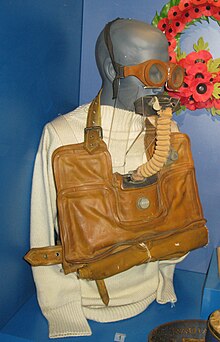 A Davis Submerged Escape Apparatus | |
| Acronym | DSEA |
|---|---|
| Uses | Oxygen rebreather for submarine emergency escape and diving |
| Inventor | Sir Robert Davis, 1910 |
| Related items | Escape set |
The Davis Submerged Escape Apparatus (also referred to as DSEA), was an early type of oxygen rebreather invented in 1910 by Sir Robert Davis, head of Siebe Gorman and Co. Ltd., inspired by the earlier Fleuss system,[1][2] and adopted by the Royal Navy after further development by Davis in 1927. While intended primarily as an emergency escape apparatus for submarine crews, it was soon also used for diving, being a handy shallow water diving apparatus with a thirty-minute endurance,[2] and as an industrial breathing set.
- ^ Davis, RH (1955). Deep Diving and Submarine Operations (6th ed.). Tolworth, Surbiton, Surrey: Siebe Gorman & Company Ltd. p. 693.
- ^ a b Quick, D. (1970). "A History Of Closed Circuit Oxygen Underwater Breathing Apparatus". Royal Australian Navy, School of Underwater Medicine. RANSUM-1-70. Archived from the original on May 9, 2008. Retrieved 2009-03-16.
